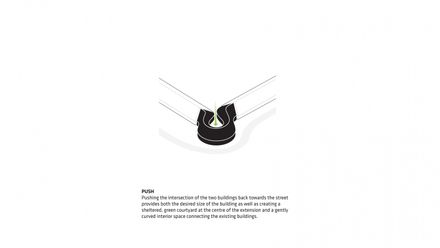
FLUGT Refugee Museum of Denmark
ARCHITECTS
Bjarke Ingels Group
PROJECT ARCHITECT
Frederik Skou Jensen
PARTNERS IN CHARGE
Bjarke Ingels, Ole Elkjær-larsen, Finn Nørkjær
BIG LANDSCAPE
Anne Katrine Sandstrøm, Barbora Hrmova, Giulia Frittoli, Jonathan Udemezue, Kristian Mousten, Ulla Hornsyld
DESIGN TEAM
Ákos Márk Horváth, Anders Holden Deleuran, Andy Coward, Anne Søby Nielsen, Cheng-huang Lin, Danyu Zeng, David Zahle, Eddie Chiu Fai Can, Gabrielé Ubareviciute, Hanne Halvorsen, Høgni Laksafoss, Laura Wätte, Katrine Juul, Kim Lauer, Lone Fenger Albrechtsen, Lukas Molter, Mads Primdahl Rokkjær, Marius Tromholt-richter, Michael James Kepke, Muhammad Mansoor-awais, Nanna Gyldholm Møller, Nikolaos Romanos Tsokas, Oliver Siekierka, Peter Mortensen, Richard Garth Howis, Sascha Leth Rasmussen, Sofiia Rokmaniko, Tore Banke, Thor Larsen-lechuga, Tomas Karl Ramstrand, Toni Mateu, Tristan Robert Harvey
YEAR
2022
LOCATION
Oksbøl, Denmark
CATEGORY
Museum
Text description provided by architect.
Located at the site of Denmark’s largest Refugee camp from World War II, FLUGT, gives a voice and a face to refugees worldwide and captures the universal challenges, emotions, spirits,s, and stories shared by displaced humans.
FLUGT is BIG’s second museum for Vardemuseerne: a local institution dedicated to archaeology, dissemination, and collection of historical knowledge about the region. BIG has adapted and extended one of the camp’s few remaining structures – a hospital building – into a 1,600 m2 museum.
At its peak, the camp became the fifth-largest city in Denmark at the time. Today, little of the camp in Oksbøl remains, but the story of arriving at the doorstep of a new country is as relevant as ever.
The former hospital, which is transformed into FLUGT, is comprised of two elongated buildings. BIG has connected the two buildings architecturally and historically by adding a soft curve-shaped volume which brings 500 m2 of additional space to the museum and creates a welcoming structure, visible from afar.
The curve is gently pulled towards the street to create an inviting arrival moment for the museum visitors.
Clad in Corten steel, the structure feels at home along with the red bricks of the former hospital buildings.
From the outside, the abstract volume welcomes visitors into what appears to be a closed entry hall.
Upon entering, a floor-to-ceiling curved glass wall reveals a view of a sheltered green courtyard and the forest, where the refugee camp used to be.
The courtyard lets light flow into the entry hall that functions as a lobby or a temporary exhibition space for guests to experience before continuing their journey into one of the museum wings.
The exhibition area in the north wing contains gallery spaces organized according to the original flow/circulation in the hospital.
While most of the hospital room walls were torn down, some of the inside walls are kept intact and stabilized by three cross-sections, creating larger exhibition spaces.
The south wing features a flexible conference room, smaller exhibition spaces, a cafe, and back-of-house functions with the same character and materiality as in the north wing:
White walls and intersections covered in white painted wood boards oriented according to the angle ceiling line, as well as yellow bricks across the entire museum floor, connecting past and present structures.
In addition to preserving and reusing the hospital buildings for historical value, extending the lifespan of the existing structures supports BIG’s mission of reducing waste, conserving resources, and creating a smaller carbon footprint as it relates to materials manufacturing and transport.
The courtyard designed by BIG Landscape creates a peaceful sensory experience inside the museum as well as outside. A small mirror pool in the heart of the courtyard reflects the sky above it.
Around the basin, heath planting known from the region emphasizes the identity of the area. Visitors who leave the museum has experienced a part of an important place in Danish history, with a new perspective on the refugee experience.























